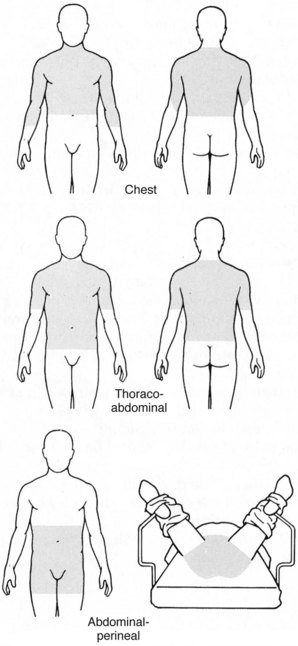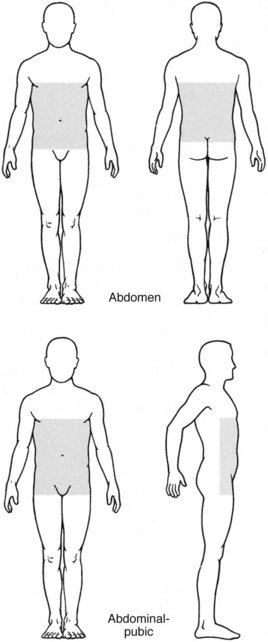Surgical Nursing Care
For an in-depth study of surgical nursing care, consult the following publications:
Lewis SM, et al: Medical-surgical nursing, ed 8, St. Louis, 2011, Mosby.
Nugent P, Green J, Hellmer Saul MA, Pelikan P: Mosby’s comprehensive review of nursing for the NCLEX-RN examination, ed 20, St. Louis, 2012, Mosby.
Patton K, Thibodeau G: Structure and function of the human body, ed 14, St. Louis, 2012, Mosby.
Potter PA, Perry AG, Stockert PA, Hall A: Fundamentals of nursing, ed 8, St. Louis, 2013, Mosby.
Weilitz P, Potter PA: Pocket guide for health assessment, ed 6, St. Louis, 2007, Mosby.
Nursing Care before Surgery
Include the following information:
Smoking or drinking restrictions before surgery
Dietary or fluid restrictions before surgery
Postoperative deep breathing, positioning, and range of motion exercises
Postoperative pain and pain relief measures available
Postoperative activity or dietary restrictions
Postoperative dressing procedures
Review of drains, nasogastric, catheter, and intravenous (IV) lines that may be inserted during surgery
History
Include the following information:
Chief complaint or reason for surgery
Prior surgeries and responses or impressions
Physical limitations such as vision or hearing problems, limps, or paralysis
History of smoking and drinking
Medications and the last time taken
Nonprescription or recreational drug use and when taken last
History of strokes, heart attacks, seizures, diabetes, and thyroid or adrenal disease
Concerns, questions, or special requests
Significant other and where he or she can be reached after surgery
Checklist
Include the following information:
Signed consent form in front of the chart
List of clothes and valuables and their placement in a safe place
Record of vital signs and last time voided
List of prostheses such as dentures and limbs removed
List of preoperative medications and when administered
Review of preoperative laboratory values and tests
Review of Body Systems
Note any problems, including the following:
Cardiac Arrhythmia, edema, cyanosis, chest pain, hypertension, murmur, heart rate, blood pressure
Respiratory Cough, shortness of breath, dyspnea, wheezing, orthopnea, orthostasis, diminished sounds, rate, depth
Neurologic Headaches, dizziness, ringing in ears, gait, reflexes, muscle strength, emotions
Gastrointestinal Nausea, vomiting, weight gain or loss, ulcers, Crohn disease or ulcerative colitis, devices
Genitourinary Urgency, frequency, retention, urinary tract infections, need for Foley catheter or other devices
Skin Bruising, open sores, rashes, signs of infection, general condition
Nursing Care after Surgery
Information Needed*
Type of surgery and anesthetic
Findings and results of the surgery
Any complications during the surgery
Transfusions given during surgery
Current respiratory condition of the patient
Current cardiac and circulatory condition of the patient
Types and number of incisions, drains, tubes, and IV lines
Current vital signs and when they need to be taken next
Current laboratory values and when specimens need to be drawn next
Dressing location, condition, and changes (the first change is generally done by the surgeon)
Neurologic status and need for future neurologic checks
Time, frequency, and route of administration of pain medications
Additional postoperative orders
Notify any family or significant others waiting for the patient

Full access? Get Clinical Tree




